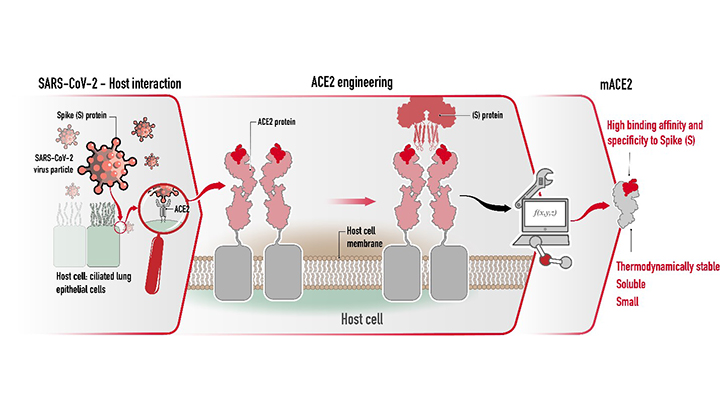Modified ACE2 (mACE2) – A High-Affinity Binder for SARS-CoV-2
ID# 2021-5216
Technology Summary
SARS-CoV-2 gains access to the host cell through the interaction of the coronavirus spike (S) protein with the human angiotensin-converting enzyme 2 (ACE2). Using computational protein engineering methods, researchers have redesigned natural ACE2 to develop a catalytically dead and stable protein, modified ACE2 (mACE2), with high binding affinity and specificity to the S protein. mACE2, which was recombinantly produced in high yields in an E. coli expression system, shows very high thermal stability and interacts with the receptor binding domain (RBD) of the S protein with nanomolar affinity.
Application & Market Utility
Perhaps one of the most critical challenges in mitigating the spread of COVID-19 is accurate knowledge of the rate of infection within the population. Hence, developing rapid and inexpensive screening tools for mapping infection spread is needed for containing the disease. Most SARS-CoV-2 diagnostics are based on extraction of RNA and its amplification by RT-PCR, which is relatively expensive, slow, and requires specialty equipment. One solution is mACE2, which is highly stable and could be used in the detection of SARS-CoV-2 viral particles, including potential application in a point-of-care diagnostic assay. This technology also has implications for therapeutics, as it can be developed into a competitive binder to the virus.
Next Steps
Seeking investment and licensing partners.

